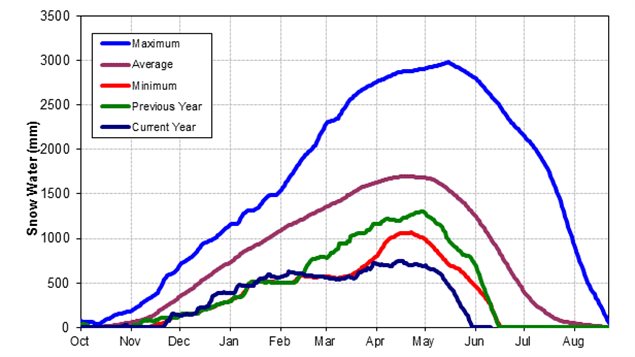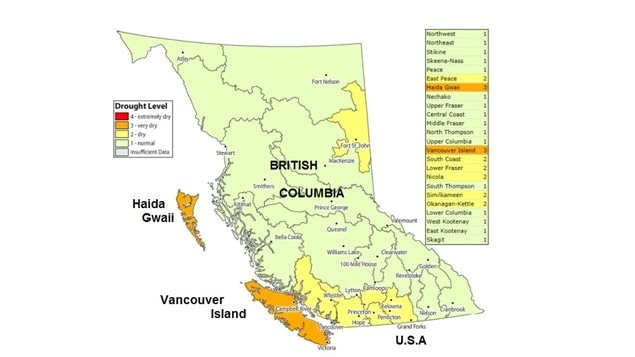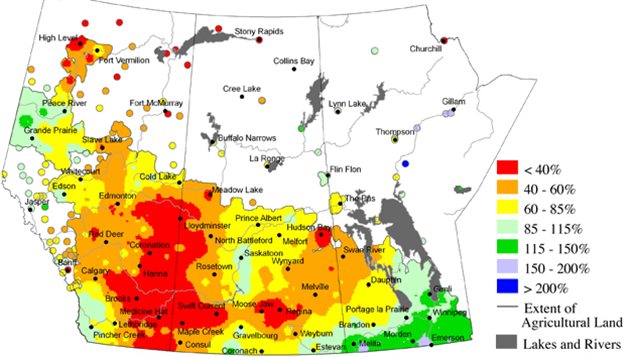Summer drought and severe crop loss possible
With the unusual climate conditions experienced across Canada this year, there are now worries about water supply in western Canada.
There was a record minimum snowfall this year from the west coast, right across the prairies. Indeed many of the Rocky Mountain ski centres remained closed for much of the season.
It’s also been much warmer and drier this spring than normal.

British Columbia government agencies are reporting that the peak melting of the snowpack occurred much earlier than normal this year and if predictions hold for a hot summer, there could be serious concerns for water supplies in many areas of the province. There are also concerns about how low river and lake levels may affect fish and wildlife.

Officials in the city of Osoyoos in the South Okanagan Valley, a typically arid region, will begin water restrictions this Friday, with washing of cars boats and buildings banned, and lawn watering limited.
The province’s water stewardship manager Valerie Cameron says Vancouver Island and Haida Gwaii have already been designated as “very dry”, or level three on the province’s drought levels gauge system. That is just one level shy of the worst drought conditions and it is the earliest in any year that the province has designated the regions to level three conditions.

While the major cities of Vancouver and Coquitlam (southern mainland) and Victoria (Vancouver Island) all have majore reservoirs, they may still soon face watering restrictions.

The dry conditions are also leading to a potentially record year for forest fires. According to the Canadian Interagency Forest Fire Centre, the number of wildfires in 2014 was 5,045, burning a total of over 4,5 million hectares. This year’s fire season, which is just underway the past month or so, is already well on the way to surpassing that with 2,865 fires burning 638,142 hectares (6,380sq km) as of June 1st.







For reasons beyond our control, and for an undetermined period of time, our comment section is now closed. However, our social networks remain open to your contributions.